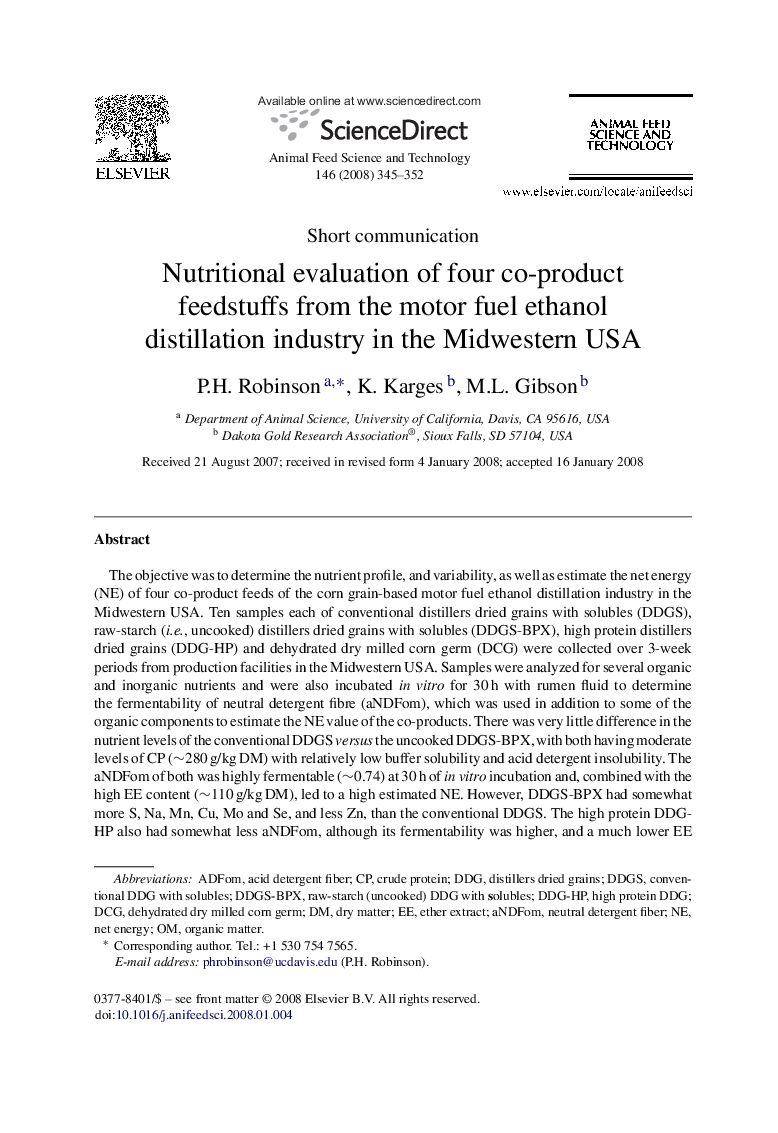| Article ID | Journal | Published Year | Pages | File Type |
|---|---|---|---|---|
| 2420535 | Animal Feed Science and Technology | 2008 | 8 Pages |
The objective was to determine the nutrient profile, and variability, as well as estimate the net energy (NE) of four co-product feeds of the corn grain-based motor fuel ethanol distillation industry in the Midwestern USA. Ten samples each of conventional distillers dried grains with solubles (DDGS), raw-starch (i.e., uncooked) distillers dried grains with solubles (DDGS-BPX), high protein distillers dried grains (DDG-HP) and dehydrated dry milled corn germ (DCG) were collected over 3-week periods from production facilities in the Midwestern USA. Samples were analyzed for several organic and inorganic nutrients and were also incubated in vitro for 30 h with rumen fluid to determine the fermentability of neutral detergent fibre (aNDFom), which was used in addition to some of the organic components to estimate the NE value of the co-products. There was very little difference in the nutrient levels of the conventional DDGS versus the uncooked DDGS-BPX, with both having moderate levels of CP (∼280 g/kg DM) with relatively low buffer solubility and acid detergent insolubility. The aNDFom of both was highly fermentable (∼0.74) at 30 h of in vitro incubation and, combined with the high EE content (∼110 g/kg DM), led to a high estimated NE. However, DDGS-BPX had somewhat more S, Na, Mn, Cu, Mo and Se, and less Zn, than the conventional DDGS. The high protein DDG-HP also had somewhat less aNDFom, although its fermentability was higher, and a much lower EE level than the DDGS and DDGS-BPX. In addition, its mineral profile differed substantially from both DDGS and DDGS-BPX. The DCG had a substantially different nutrient and mineral profile than all the DDG products, and differed to a small extent from conventionally produced corn germ (National Research Council, 2001. Nutrient Requirements of Dairy Cattle, seventh rev. ed. National Academy of Sciences, Washington, DC, USA). These ‘new generation’ corn distillers co-products have a high nutritional value for ruminants and, in general, nutrient variability was low. Considered in the context of overall ration formulation criteria, these co-products should have a high nutritive value in cattle rations.
